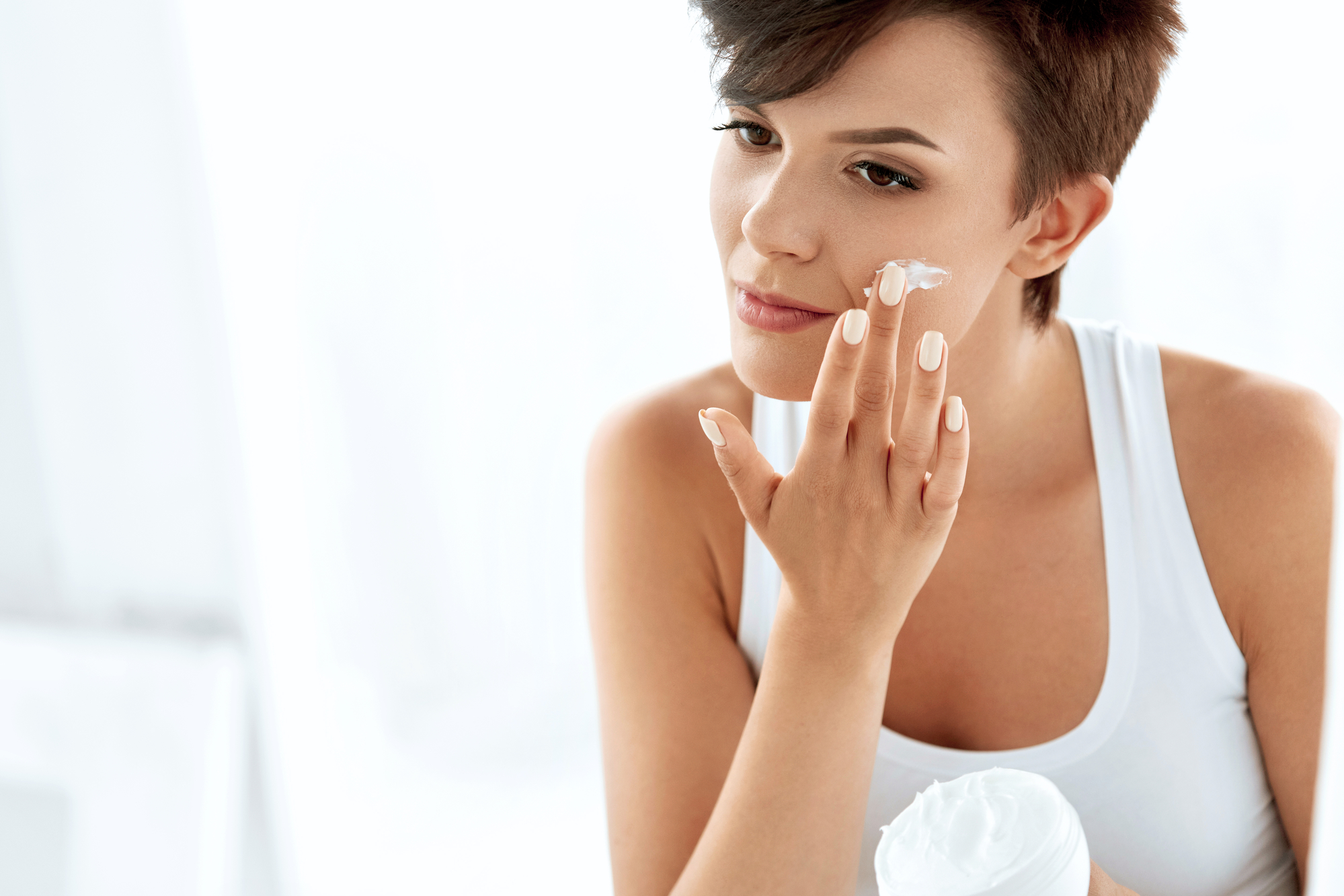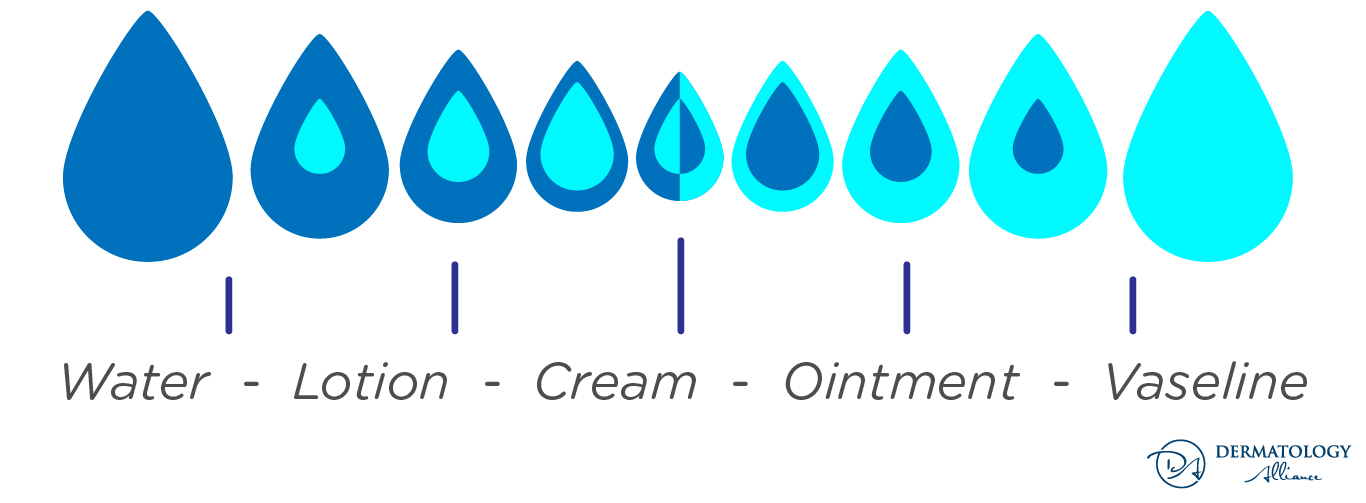Do you know what’s in your moisturizers? What are you really putting on your skin?
It’s easy to grab a product that boasts the ability to leave your skin feeling hydrated and refreshed, but knowing the specifics about lotion and cream could make the difference in the health of your skin.
Types of Moisturizers
“Moisturizer” is just a broad term. It’s something you put on your skin to increase comfort and lubrication. As we face the choices involved in selecting a moisturizer vs. a lotion, or telling the difference between a lotion and a cream, we need to understand what goes into making a moisturizer. These products aren’t opposites but rather different shades of a spectrum.
Think of moisturizers as a spectrum from water to vaseline. On one side of the spectrum, we have water. On the other side, we have vaseline. Lotions, creams, and ointments are just varying combinations of the two.
Water alone is a weak moisturizer. It evaporates quickly and doesn’t protect your skin. Vaseline, however, is straight petroleum, and remains sticky and gooey much longer than most people want. So we make moisturizers that fall in the middle of these two extremes to meet different needs.
Lotion is mostly water whipped with a little vaseline. Add a little more vaseline to the mixture, and you make a cream. For an ointment, start with vaseline and add mineral oil (or another oil) to decrease the petroleum’s stickiness.
But with all the products on the shelves, surely, it’s not that simple. Of course not. With the addition of water and air, comes the likelihood of bacteria and rot. So we add preservatives to prevent lotions and creams from spoiling. Since preservatives can stink, we add fragrances to mask the unpleasant smell.
The more water content a product contains, the more likely it is for bacteria to form, so the higher the preservative and fragrance content. Also, remember that water doesn’t absorb into the skin. Hence, penetration enhancers may be added too.
Because lotion is primarily made of water, it contains the most added ingredients. Since it’s the thinnest of the products, it goes on smoothly and usually smells great too. But if you’ve ever felt a burn after you applied lotion, you know lotion isn’t always the best choice. Our skin isn’t used to some of these additives, specifically the preservatives. When we apply them, our skin can react with a burning or stinging sensation, or by turning red. If you’re experiencing these effects from a lotion, it’s time to select a different moisturizer.
Which Moisturizer Should I Use?
Your choice of moisturizer depends on your skin and the time of year. If you need just a little extra hydration, opt for a lotion or cream. But, if you have more sensitive skin, you’ll want to avoid preservatives, penetration enhancers, and fragrances. This makes an ointment a better choice.
So why are ointments better for sensitive skin? Remember, vaseline doesn’t contain water or air, so it never rots or contracts bacteria. As many who have left that tub of vaseline on the shelf for years can attest, vaseline lasts forever. Mineral oil also naturally repels air and bacteria. So if a product only contains oil and vaseline, it doesn’t need the preservatives so many lotions and creams contain.
Yes, ointments are oilier, but they contain fewer irritants and protect the skin more effectively.
That also makes ointments a great choice for the winter months. During cold weather, our skin is more likely to dry out and crack. As we go across the spectrum, the more Vaseline we add to a moisturizer, the more of a barrier it forms. During the winter, creams and ointments seal our skin from the harsh climate and keep it comfortable.
So, if you’re wondering why your lotion isn’t working anymore, it could be time to move across the spectrum. Your lotion contains too much water. You need a heavier product (with more vaseline) that will last longer and work harder to keep your skin in great condition until spring comes back.

Dr. R. Todd Plott is a board-certified dermatologist in Coppell, Keller, and Saginaw, TX. His specialization and professional interests include treating patients suffering with acne, identifying and solving complex skin conditions such as psoriasis, rosacea, atopic dermatitis, and identifying and treating all types of skin cancers. In his spare time, Dr. Plott enjoys cycling, traveling with his wife, and spending time with his children and new grandson.
Learn more about Dr. Plott.


